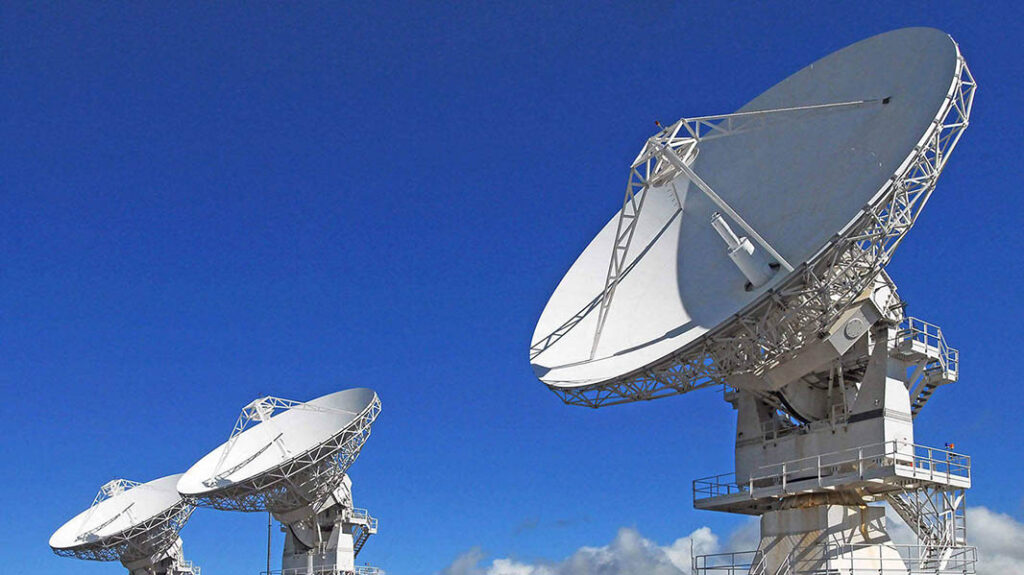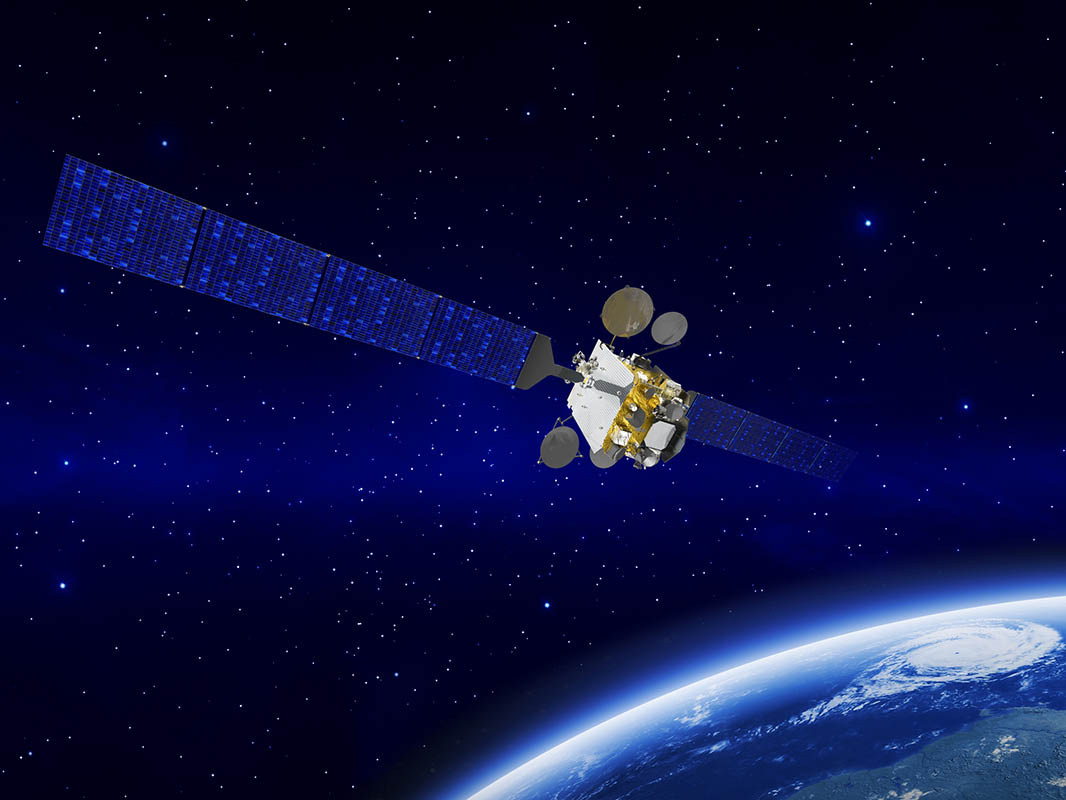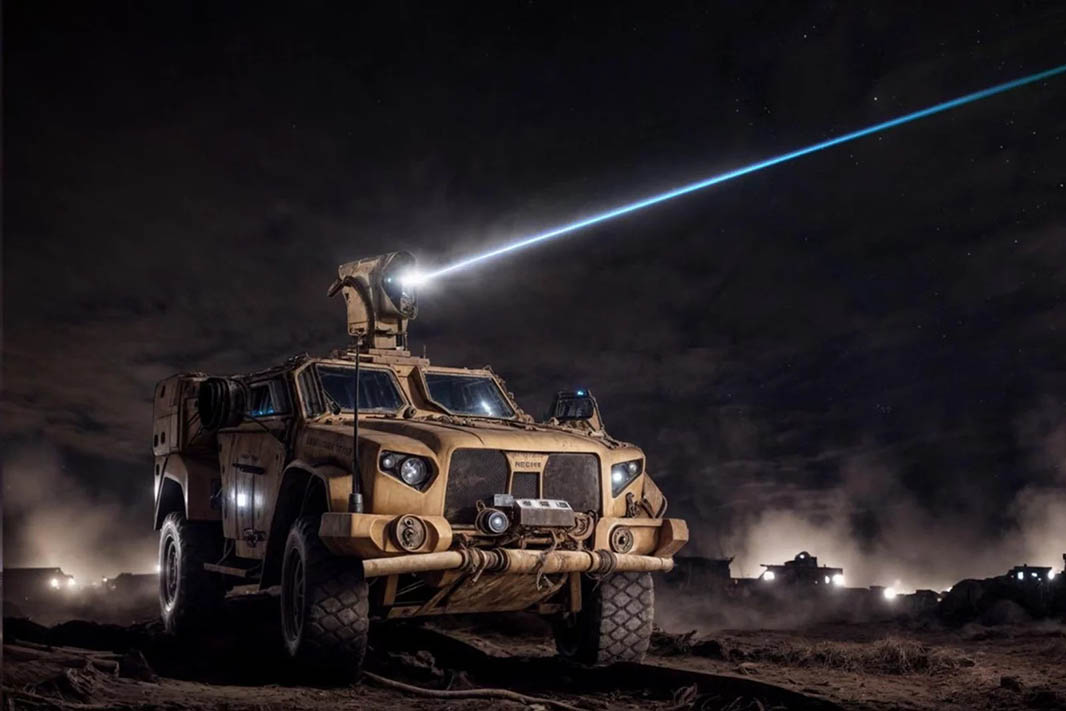Europe is chalking up another military connectivity success story thanks to ongoing work of the European Protected Waveform satellite communications initiative.
“I saw two shooting stars last night, I wished on them, but they were only satellites. Is it wrong to wish on space hardware? I wish, I wish, I wish you’d care.” sang singer-songwriter Billy Bragg in his 1983 hit ‘A New England’. Wishing on satellites, and their communications capabilities, is central to the European Protected Waveform (EPW) initiative. Satellite communications (SATCOM) have long been integral for military communications at the tactical, operational and strategic level. The first military communications satellite, Project SCORE (Signal Communications by Orbital Relay Equipment), was launched by the United States Air Force (USAF) on 18 December 1958. Since then, the global dependence of the world’s militaries on SATCOM has steadily increased.
One consequence of this exponential growth is that demand has largely out-stripped provision. Nations typically own just a handful of these expensive assets. For example, France possesses two Thales Alenia Space/Airbus Defence and Space Syracuse (Système de Radio Communication Utilisant un Satellite; ENG: Radio Communications System by Satellite) spacecraft. Syracuse-4A and Syracuse-4B provide X-band (7.9–8.4 GHz uplink/7.25–7.75 GHz downlink) and Ka-band (26.5-40 GHz uplink/18-20 GHz downlink) coverage across much of the globe. The outlier in terms of military SATCOM fleet size is the United States. As of 2023, the US Department of Defense (DoD) reportedly has 53 dedicated military communication satellites, according to the Union of Concerned Scientists (USC), a scientific advocacy organisation based in Cambridge, Massachusetts.

The relative paucity of dedicated military communications satellites has resulted in governments and militaries looking towards the private sector to lease bandwidth from commercial operators. An understandable prerequisite of such services is that they provide secure communications. However, while better than nothing, the use of commercial provision for military SATCOM is not always ideal. First, these services can be expensive to lease. Second, the user must trust that the security of the communications they are leasing is up to scratch. Third, the user might have to obtain dedicated SATCOM terminals to access these services. Sometimes, the terminals will be included in the leasing agreement. On other occasions, the user might need to configure their existing terminals to use these services. Dedicated software which can handle the communications waveforms used by a particular satellite or constellations might be necessary. Moreover, one set of waveforms and terminals may not always work with those of another commercial operator. The leaser may then need to procure additional terminals and/or waveforms to use additional commercially-provided secure SATCOM services.
The European approach
Europe gets some flak, some deserved, some not, for the continent’s effectiveness at working collaboratively on joint defence programmes. Nevertheless, a quiet revolution is occurring in the continent’s military communications sector. The European Secure Software Defined Radio (ESSOR) waveform is a successful example of several nations working together to answer a common need. In this case, the project is delivering a suite of tactical communications waveforms, primarily for land forces. These waveforms are designed to be ‘radio agnostic’. Users can load them into their existing and future transceivers and benefit from secure, wideband intra- and inter-force communications. The logic of ESSOR is to ease the ability of forces to not only communicate within themselves, but also between nations. Providing these connections is a sine qua non for coalition operations. The chance that European nations will fight alone on the continent, or elsewhere for that matter, are practically zero. ESSOR greatly improves the ability of militaries to move voice and data traffic securely across the battlespace within and between forces. Alongside the wideband high-data rate waveform the A4ESSOR industrial consortium is developing, narrowband, air-to-surface/surface-to-air and SATCOM waveforms are in the offing. Currently, the ESSOR initiative involves Finland, France, Germany, Italy, Poland and Spain. The A4ESSOR consortium comprises Bittium, Indra, Leonardo, Radmor, Rohde and Schwarz, and Thales.
Impressive as ESSOR is, it is not the only collaborative military communications programme on the continent. In 2021, the European Commission commenced the European Protected Waveform (EPW) initiative. It is the Commission’s role to draft and present proposed policy to the Council of the European Union, which is then voted on by the European Parliament as potential legislation. The EPW is financed by the European Defence Fund (EDF), which is part of the EU’s Common Security and Defence Policy (CFSP). Established in 2017, the EDF is mandated to manage, promote and coordinate collaborative European defence projects. According to the Commission, the EDF also aims to improve European military interoperability. The EPW is emblematic of these intentions and aspirations.

According to the Commission, realisation of the EPW is expected to cost circa EUR 65 million over the two phases funded thus far, with Belgium, Croatia, Denmark, France, Germany, Italy, Luxembourg, The Netherlands, Poland, Romania and Spain all involved in the initiative. The industrial effort is pursued by 19 companies and organisations. Belgium leads the initiative, which is coordinated by STE Engineering iDirect Europe. The EPW industrial base is confined to EU member states, and their companies, as the finance is secured via the EDF.
In the Commission’s own words, the EPW project will “study and design a multi-layered security and resiliency solution built around the cornerstones of efficient, secure, affordable and interoperable (satellite communications) to embrace today’s and future challenges related to increased throughput demand over satellite, dispersed operations, mobility and new security threats.”
Within the waveforms
Koen Willems, EPW project coordinator at STE Engineering iDirect Europe, shared that the EPW programme has three phases. According to an iDirect press release, Phase 1 commenced in January 2023 and is scheduled to run until the first quarter of 2026. Phase 1 is worth EUR 29.9 million, with the Commission contributing EUR 25 million and EU member state co-financing providing the remaining EUR 4.9 million; 12 nations and 19 companies were involved in this phase and the work forces on the study and design of the EPW. The second phase was awarded by the EDF in 2024. The Commission is contributing a further EUR 25 million, with EU members contributing EUR 10 million; 22 companies and 12 nations are involved in this phase which will perform EPW prototyping and testing work. According to an iDirect press release, Phase two began in January 2025, and is expected to conclude in 2028. According to Willems, Phase 3 should be awarded circa 2028.
The main EPW deliverable is a secure and resilient military-grade SATCOM waveform supporting voice, video and data traffic that can be ported with ease into third-party SATCOM terminals. Willems notes that nations with their own dedicated military communications satellites already have sovereign waveforms they use with these constellations. These waveforms are typically not shared with other nations and may have some disadvantages. For example, they may only work with geostationary satellites. These spacecraft remain in a fixed orbital position above a specific place on Earth providing coverage over a finite area. This area may be huge, encompassing millions of square kilometres of the planet’s surface. Nonetheless, there may be some areas where these geostationary satellites are unable to provide coverage. The US DOD has been investing in communication satellites in recent years to provide coverage in Arctic regions since the high North has suffered shortfalls in military SATCOM availability. Some of these sovereign waveforms may now have comparatively old design features and are likely to be highly constellation- and spacecraft-specific. This greatly restricts, if not altogether prevents, sovereign waveforms’ ability to work across other constellations in different satellite orbits.

At the industrial level, sovereign waveforms limit the user to procuring these from a single supplier which has been tasked with developing and implementing the waveform. EPW takes a different approach as several companies are involved. Each participating nation can procure the interoperable EPW waveform from the participating national supplier. Koen Willems said that spreading the development effort, and hence the expense, of realising the waveforms will help reduce the cost of their procurement. Taking a similar approach to ESSOR, EPW essentially drafts a series of standards for specific waveforms. Customers then use these standards to draft the software for their SATCOM terminals allowing the latter to send and receive the desired waveforms.
The lack of flexibility of some existing sovereign military SATCOM waveforms means that they also cannot take advantage of several important and imminent satellite communications technological advancements. An instructive example in this regard is the onward march of 5G/6G cellular communications. While 5G is arguably most clearly associated with terrestrial cellular networks, the technology has applicability to SATCOM. It would be possible to write a whole article on 5G and its benefits vis-à-vis existing 4G cellular standards. Broadly speaking, 5G will allow significantly more subscribers to be hosted by each individual node, such as a cell tower, on a specific network. Larger throughputs of data are promised by 5G protocols when compared to 4G. Latency rates, the time it takes for traffic to move from a transmitting device to a receiver and vice versa, are set to reduce with 5G.

Plans are afoot to provide 5G provision from space. The International Telecommunications Union (ITU), the designated UN organisation governing the global use of the radio spectrum, has earmarked several wavebands for non-terrestrial 5G communications. The ITU states that these bandwidths are between 410 MHz and 7 GHz, and between 17.3–30 GHz. An article published by the Institute of Electrical and Electronic Engineers (IEEE) entitled ‘5G Satellite Spectrum’ provides more specifics regarding 5G for SATCOM: Low-Earth orbit (LEO) satellites are the favoured means of providing 5G coverage. Orbiting at a maximum altitude of 2000 km (1,080 NM), these spacecraft are not geostationary. Instead, they zip across the sky, visible for a comparatively short time. No sooner has one LEO satellite disappeared over the horizon, than another has arrived. In fact, the IEEE says that around 5,000 LEO satellites may be in orbit, and more are on the way. This means that 5G users on Earth will always have several satellites in their field-of-view with which to communicate. Willems says that the EPW waveforms will be compatible with these LEO satellites providing 5G coverage. He adds that, while “5G is a key standard” it is “not fully developed and not fully secure”. With this in mind, the EPW adds an additional software layer to make the 5G protocol secure for military use.
Another interesting EPW design feature is that the waveforms will not depend on position, navigation and timing (PNT) signals from global navigation satellite system (GNSS) constellations. SATCOM terminals can depend on GNSS PNT signals for an accurate time source to synchronise with the constellation, but without going into specifics, Willems says the EPW is developing non-GNSS PNT alternatives, to eliminate this dependence. As the GNSS jamming by both sides in the ongoing war in Ukraine illustrates, this is an important consideration.
Terminal and constellation agnosticism is a key EPW consideration. The resulting SATCOM waveforms will work with the EU’s Infrastructure for Resilience, Interconnectivity and Security by Satellite (IRIS2) constellation. The Commission says that IRIS2 is a planned constellation of 290 multi-orbit LEO and medium-Earth orbit (MEO) communications satellites, which orbit at altitudes of between 2000 km (1,080 NM) and 36,000 km (19,438 NM). IRIS2 will provide broadband connectivity to individual, commercial and governmental users across the EU. The project commenced this year and its associated satellites should begin launching from 2029, the author understands. IRIS2 sources say the satellites will carry secure Ku-band (14 GHz uplink/10.9 GHz to 12.75 GHz downlink) and military Ka-band traffic. Koen Willems says that EPW will also yield military-grade 5G waveforms which can be used with the IRIS2 constellation.

EPW Phase-1 “is running fine and will be delivered on time”, according to Willems. This phase primarily concentrates on study and design work, which will draft the so-called ‘blue book’, intended to define the waveform standards. Phase-2 will see the continued update of the blue book to account for changes to the 5G protocol, and evolving security threats, both of which are evolving over time, Willems stressed. This phase will also see the waveforms initially being brought to market. Work scheduled for Phase-3 includes making the 5G SATCOM protocol fully secure and “working on the compatibility with IRIS2”.
Initially, the waveforms that will be developed via the EPW2 initiative will only be for use by EU member states; however, the waveforms can be made available for acquisition beyond those nations that are the original partners in the project. Koen Willems does see the possibility that the waveforms could be made available to partner nations outside the EU over the long term and notes that Belgium is both an EU and NATO member. EPW waveforms could be provided to NATO nations in the future provided this is permitted by the European Commission. Expanding the user community beyond the EU would have the benefit of making the waveform available to non-EU members such as Canada, Norway and the United Kingdom.
Alongside ESSOR, the EPW programme showcases the continent’s collaborative acumen in the all-important field of military communications. The developmental trajectory of the project also shows that EPW is preparing for the future with the advent of space-based 5G. To paraphrase singer-songwriter Billy Bragg, the EU may well be wishing on space hardware, but it looks likely to have those wishes granted.
Dr Thomas Withington
Author: Dr Thomas Withington is an independent electronic warfare, radar and military communications specialist based in France.


